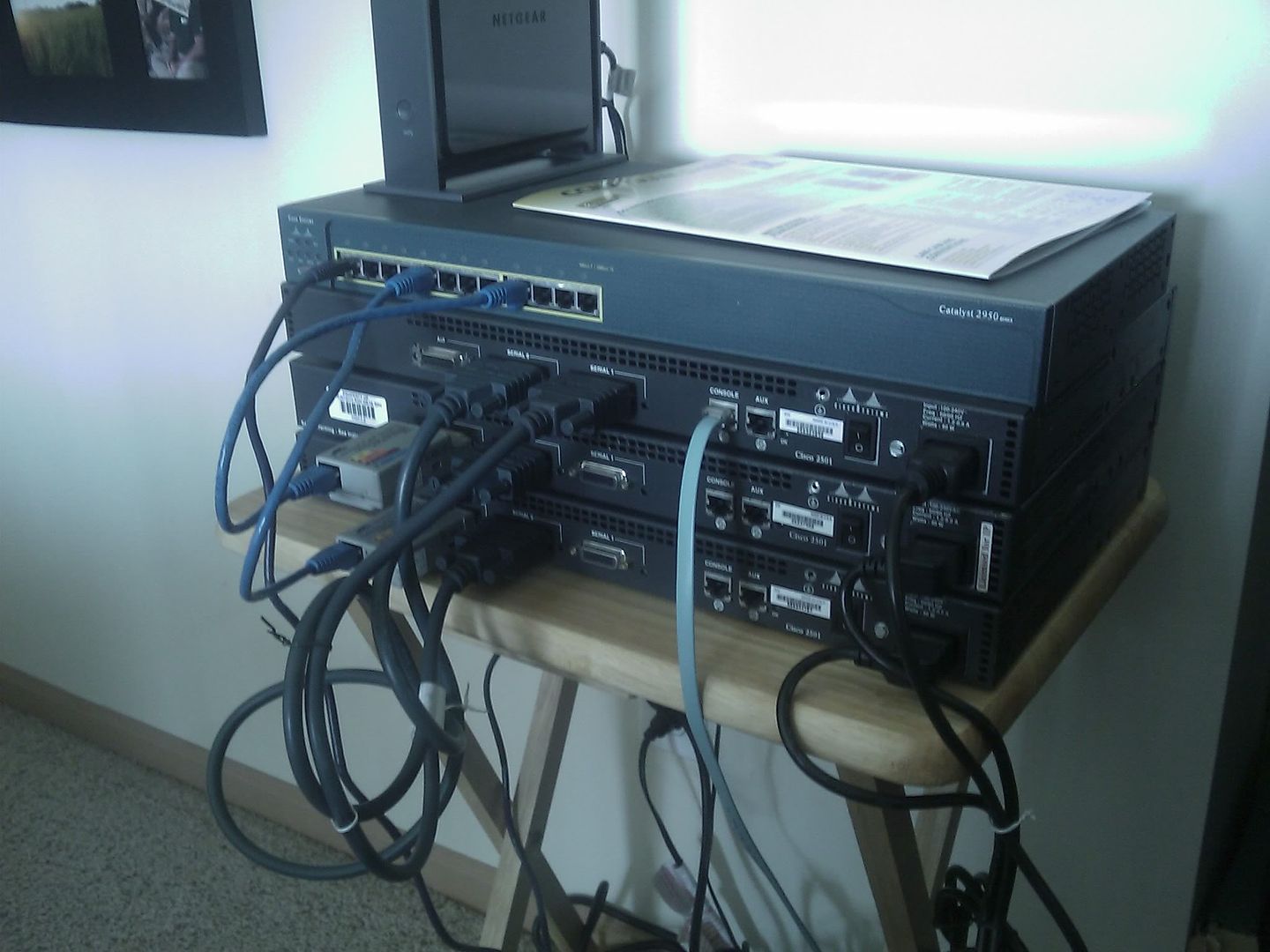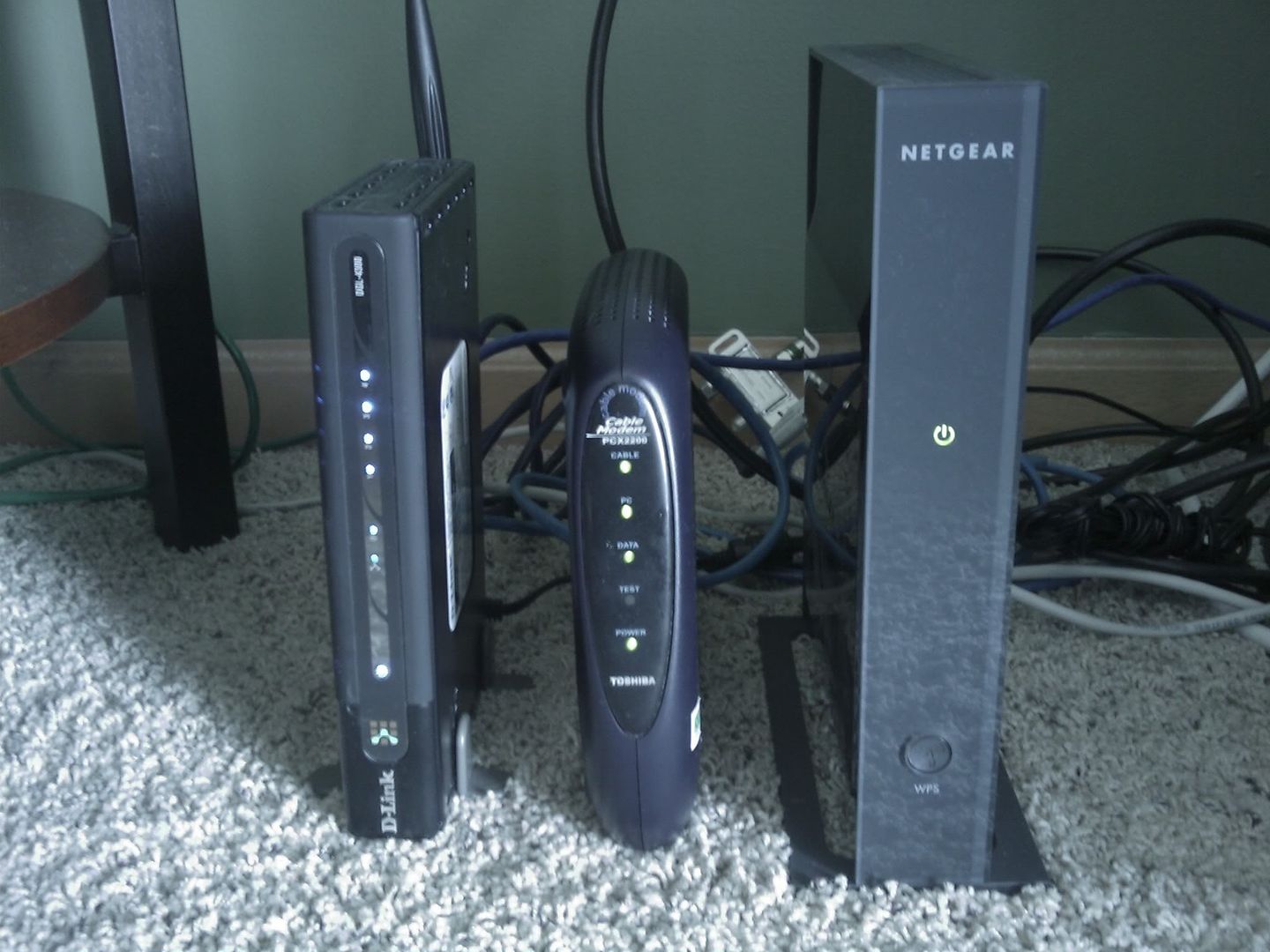diagram:Code:Microsoft Windows XP [Version 5.1.2600] (C) Copyright 1985-2001 Microsoft Corp. C:\Documents and Settings\@>cd \ C:\>iperf -s ------------------------------------------------------------ Server listening on TCP port 5001 TCP window size: 8.00 KByte (default) ------------------------------------------------------------ [1848] local 192.168.0.101 port 5001 connected with 192.168.2.254 port 4540 [ ID] Interval Transfer Bandwidth [1848] 0.0-10.0 sec 70.1 MBytes 58.8 Mbits/sec [1816] local 192.168.0.101 port 5001 connected with 192.168.2.254 port 4550 [ ID] Interval Transfer Bandwidth [1816] 0.0-10.0 sec 69.5 MBytes 58.3 Mbits/sec [1828] local 192.168.0.101 port 5001 connected with 192.168.2.254 port 4590 [ ID] Interval Transfer Bandwidth [1828] 0.0-10.0 sec 70.4 MBytes 59.0 Mbits/sec ------------------------------------------------------------ Client connecting to 192.168.2.254, TCP port 5001 TCP window size: 8.00 KByte (default) ------------------------------------------------------------ [1812] local 192.168.0.101 port 1367 connected with 192.168.2.254 port 5001 [ ID] Interval Transfer Bandwidth [1812] 0.0-10.0 sec 96.0 MBytes 80.4 Mbits/sec [1832] local 192.168.0.101 port 5001 connected with 192.168.2.254 port 4648 ------------------------------------------------------------ Client connecting to 192.168.2.254, TCP port 5001 TCP window size: 8.00 KByte (default) ------------------------------------------------------------ [1788] local 192.168.0.101 port 1395 connected with 192.168.2.254 port 5001 [ ID] Interval Transfer Bandwidth [1788] 0.0-10.0 sec 64.7 MBytes 54.2 Mbits/sec [1832] 0.0-10.0 sec 57.4 MBytes 48.0 Mbits/sec [1804] local 192.168.0.101 port 5001 connected with 192.168.0.222 port 4844 ------------------------------------------------------------ Client connecting to 192.168.0.222, TCP port 5001 TCP window size: 8.00 KByte (default) ------------------------------------------------------------ [1820] local 192.168.0.101 port 1577 connected with 192.168.0.222 port 5001 [ ID] Interval Transfer Bandwidth [1804] 0.0-10.0 sec 15.0 MBytes 12.6 Mbits/sec [1820] 0.0-10.0 sec 11.0 MBytes 9.24 Mbits/sec [1816] local 192.168.0.101 port 5001 connected with 192.168.2.254 port 4923 ------------------------------------------------------------ Client connecting to 192.168.2.254, TCP port 5001 TCP window size: 8.00 KByte (default) ------------------------------------------------------------ [1796] local 192.168.0.101 port 1631 connected with 192.168.2.254 port 5001 [ ID] Interval Transfer Bandwidth [1816] 0.0-10.0 sec 64.5 MBytes 54.0 Mbits/sec [1796] 0.0-10.0 sec 61.1 MBytes 51.2 Mbits/sec [1860] local 192.168.0.101 port 5001 connected with 192.168.2.254 port 4948 ------------------------------------------------------------ Client connecting to 192.168.2.254, TCP port 5001 TCP window size: 8.00 KByte (default) ------------------------------------------------------------ [1780] local 192.168.0.101 port 1652 connected with 192.168.2.254 port 5001 [ ID] Interval Transfer Bandwidth [1860] 0.0-10.0 sec 62.8 MBytes 52.6 Mbits/sec [1780] 0.0-10.0 sec 62.6 MBytes 52.5 Mbits/sec [1812] local 192.168.0.101 port 5001 connected with 192.168.2.254 port 4973 ------------------------------------------------------------ Client connecting to 192.168.2.254, TCP port 5001 TCP window size: 8.00 KByte (default) ------------------------------------------------------------ [1804] local 192.168.0.101 port 1675 connected with 192.168.2.254 port 5001 [ ID] Interval Transfer Bandwidth [1812] 0.0-10.0 sec 63.7 MBytes 53.5 Mbits/sec [1804] 0.0-10.0 sec 62.9 MBytes 52.7 Mbits/sec [1808] local 192.168.0.101 port 5001 connected with 192.168.2.254 port 4981 ------------------------------------------------------------ Client connecting to 192.168.2.254, TCP port 5001 TCP window size: 8.00 KByte (default) ------------------------------------------------------------ [1772] local 192.168.0.101 port 1687 connected with 192.168.2.254 port 5001 [ ID] Interval Transfer Bandwidth [1772] 0.0-10.0 sec 63.7 MBytes 53.3 Mbits/sec [1808] 0.0-10.0 sec 63.1 MBytes 52.9 Mbits/sec [1848] local 192.168.0.101 port 5001 connected with 192.168.2.254 port 5000 [ ID] Interval Transfer Bandwidth [1848] 0.0-10.0 sec 69.8 MBytes 58.4 Mbits/sec [1800] local 192.168.0.101 port 5001 connected with 192.168.2.254 port 1101 [ ID] Interval Transfer Bandwidth [1800] 0.0-11.2 sec 77.6 MBytes 58.2 Mbits/sec [1824] local 192.168.0.101 port 5001 connected with 192.168.2.254 port 1110 [ ID] Interval Transfer Bandwidth [1824] 0.0-180.0 sec 1.96 GBytes 93.6 Mbits/sec [1780] local 192.168.0.101 port 5001 connected with 192.168.2.254 port 1320 [ ID] Interval Transfer Bandwidth [1780] 0.0-1800.0 sec 15.8 GBytes 75.5 Mbits/sec
pc1-switch-rb433ah-switch-pc2
change your window size (upto 64K) with iperfs -w switch to get a better throughput - yours will be running at the default 8K. I was doing some testing yesterday - and finding out how crap VISTA networking is (or rather tweaking oppurtunities!) - my W2K3 box from one interface to another (through a VM) over GB LAN using either the switch or a direct connect cable maxs out at about 460MBits/s - my vista 64 box (P6T WS i7) to the same server maxes out at about 860MBits/s (with all the discovery crap switched off).
Last edited:
![[H]ard|Forum](/styles/hardforum/xenforo/logo_dark.png)
























